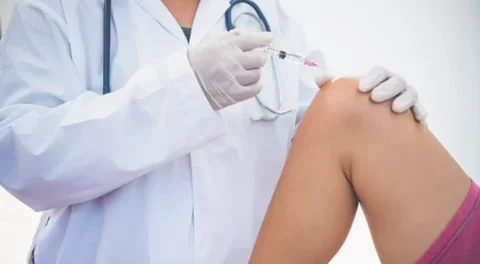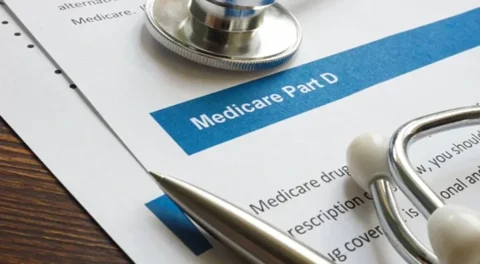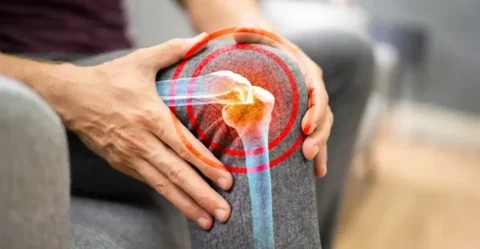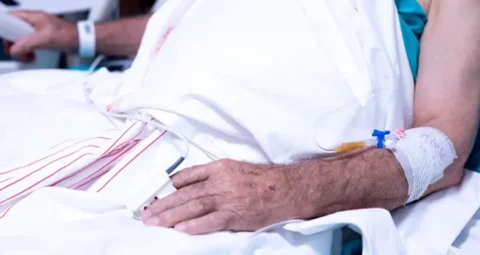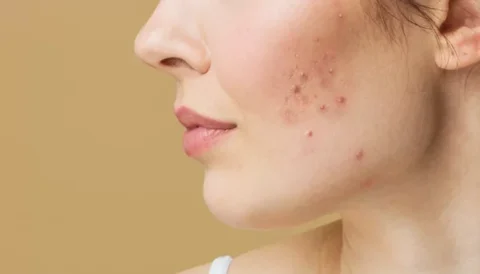Platelet-rich plasma or PRP is frequently used in both medical and cosmetic practices as a safe and natural way to promote better cell growth and tissue regeneration in certain areas of your body. Treating sports injuries like joint and tendon injuries, as well as skin rejuvenation and wound healing are just some of the things that PRP is popular for. This is no different when it comes to hair growth, especially when dealing with hereditary hair loss conditions like androgenic alopecia, as PRP can be injected into your scalp to stimulate it and help it grow new and healthy hair. However, some may worry about the effectiveness of PRP in clinical and research standards, since using this treatment for hair loss is still fairly new.
So are there studies that support the effectiveness of PRP for hair growth? Yes, there are several studies that suggest that the activation of platelet-rich plasma on your scalp can be beneficial for those looking to improve their head of hair and stop progressive hair loss caused by androgenic alopecia. However, these studies also show that the results of PRP can vary depending on factors like the quality of your blood. It would need a few more years of research to establish the other benefits of PRP treatments apart from treating hair loss issues.
Studies on PRP for Hair Regrowth
Here are 3 promising studies that show the potential benefits of PRP for treating progressive hair loss caused by hereditary hair loss or androgenetic alopecia. PRP is believed to play an important role in hair regrowth as it can stimulate hair follicular cells to produce healthier hair follicles. This is through producing improved dermal hair follicles while also improving blood flow from the blood vessels around hair follicles.
While these studies provide evidence of PRP as a good option against hair loss, it’s important to also consider the limitations of each study. For instance, a study with an exclusively-male pool of participants may not provide accurate results that reflect on female pattern baldness. These studies also cover patients with androgenic alopecia, and not other hair loss causes.
Study #1: “Platelet-Rich Plasma in Androgenic Alopecia: Myth or an Effective Tool”
In 2014, researchers from the Smt Kashibai Navale Medical College published the study “Platelet-Rich Plasma in Androgenic Alopecia: Myth or an Effective Tool” in the Journal of Cutaneous and Aesthetic Surgery. Given that PRP was becoming a new method to treat androgenetic alopecia (more commonly known as male or female pattern hair loss), they wanted to examine the safety, efficacy, and feasibility of platelet-rich plasma injections for pattern hair loss.
For their research, they had 11 male patients experiencing hair loss due to androgenic alopecia. These patients had previously tried minoxidil and finasteride for six months but didn’t see any results; on average, most patients should see the effects of these hair growth-stimulating medications within 2 to 4 months.
These participants were given PRP injections that covered 2 to 3 cubic centimeters of their scalp every 2 weeks for 3 months. After 3 months, the researchers observed the participants’ hair growth based on clinical examinations, macroscopic photos, a hair pull test, and the patient’s satisfaction with their hair.
Results from the study showed that, for 9 patients, the type of hair loss visibly decreased between the first and fourth injections of the study. For all the patients, the average number of hair follicles in the treatment area increased from a preoperative hair count of 71 units to an increased hair count of 93 units.
While the results of the study show positive effects that support the claims of PRP’s benefits for hair growth, there are some limitations that may need to be addressed by further study. First, a sample size of 11 participants is too small.
Furthermore, the study doesn’t indicate if PRP is beneficial to women experiencing female pattern hair loss since all the participants were men. Additionally, this research took place in the span of 3 months, which doesn’t suggest the long-term benefits of PRP injections for pattern hair loss.
Study #2: “Efficacy of platelet-rich plasma in treatment of androgenic alopecia”
Another study published in 2015 conducted a similar experiment to the first one. Researchers from Santosh Medical College published in the Asian Journal of Transfusion Science their study, “Efficacy of platelet-rich plasma in treatment of androgenic alopecia”. The study was meant to investigate the clinical efficacy of PRP as one of the potential growth factors for treating androgenic alopecia and its beneficial effects as one of the effective treatments for hair loss without the risk of major side effects.
The experiment had 10 patients – 8 male and 2 female – that were in generally good physical health, within the same age range, and were experiencing androgenic alopecia. They also had a similar control group with the same age range and sex that were subjected to hair growth medication but no PRP.
The first group was given PRP injections every 2 to 3 weeks for 3 months. After the treatment period, both groups were subjected to clinical examinations, macroscopic photos, and a hair pull test.
Out of the 10 patients that received PRP, 6 observed visible hair growth within a week after starting PRP treatments while the other four noticed hair growth after 15 days. By the end of the experiment, all patients had reported a slight increase in their hair growth and a reduction in hair loss.
On top of that, patients reported better hair density and hair thickness, as well as a stronger hair shaft that improved during the hair pull test. In comparison, the control group that only received medical treatment had no improvement on the hair pull test and didn’t have visible hair growth.
Just like the first study done the year before, this suggests the positive effects PRP can have on your scalp and hair growth as a treatment of hair loss. But the sample size, even with a control group, is still too small to be certain of the results, and bigger studies should be done to really prove the benefit PRP can have on androgenetic alopecia.
Study #3: “A study to compare the efficacy of platelet-rich plasma and minoxidil therapy for the treatment of androgenetic alopecia”
Researchers from Indira Gandhi Medical College published their findings in the International Journal of Trichology in an article, “A study to compare the efficacy of platelet-rich plasma and minoxidil therapy for the treatment of androgenetic alopecia”. The researchers wanted to compare the effects of PRP treatments with minoxidil and observe its role in hair regrowth and the relatively new practice of PRP injections can stand as a potentially new treatment for hair loss. By doing so, it can compare both treatments and find which is safer and more effective for managing androgenetic alopecia.
In this study, 40 male patients were divided into two groups: one group that received platelet-rich plasma therapy, and one group that was given minoxidil. For the group that received PRP, their blood samples were examined for platelet counts to check if there was a correlation between platelet concentration and how effective PRP treatments are.
After 6 months of treatment, 16 patients that received PRP and 14 patients that received minoxidil were able to complete the treatment. Both groups were subjected to global photography, a hair pull test, a hair growth questionnaire, and patient satisfaction.
Researchers observed based on the global photography of the 30 participants that patients that had PRP treatments had a comparatively better outcome than those that took minoxidil for 6 months. Some patients experienced minimal side effects of PRP injections (like headaches, which are a common type of side effect for any injection) during the healing process after getting treatment, but apart from this, there were no major adverse effects.
This suggests that PRP may produce better results for active hair growth compared to existing medications on the market like minoxidil. It’s also possible to combine both PRP and minoxidil, as well as PRP with any other cosmetic procedure to enhance the appearance of your hair.
Based on the platelet counts of the participants that had PRP treatments, those who had a higher concentration of platelets had much better results than those with lower platelet counts. Given that PRP’s main function is reliant on your platelets’ repair function, this suggests that those with unhealthy blood cells, abnormal platelet function, and platelet-poor plasma or low platelet count from samples of concentrations of platelets may not be suitable candidates for undergoing blood draw or receiving effective PRP treatment to trigger enough cell proliferation to have good results.
The study also had several limits. Like the other studies, the sample size may be considered too small to provide conclusive answers on how effective PRP is. The study started with 20 participants to observe the results of PRP, but this dropped to 16 patients by the end of the study.
All participants were male, so further studies should be done to see if the research would have produced the same results for female participants, which can make PRP a potential treatment for hair loss for women.
Visit FACE Med Store for Quality Hair Care Products
These are just some studies that support the use of PRP for active hair growth treatments. There’s still plenty of room for future research on treating alopecia with platelet-rich plasma therapy by using larger sample sizes and including more female participants to explore further use of PRP to handle pattern baldness for both sexes. There’s even the possibility of exploring PRP’s benefits for hair growth outside of treating hereditary hair loss and complementing its effects on numerous growth factors, as well as its effects on any type of hair loss not necessarily caused by pattern baldness.
FACE Med Store is your reliable online store for health and beauty products and supplies. We offer quality items at competitive prices, allowing everyday users to get great deals and medical and aesthetic businesses to find cost-effective supplying solutions. Visit our store today to find the hair care products you need to help treat the different types of hair loss.
Read More: Platelet-Rich Plasma for Hair Loss by Non-Doctors: Is It Safe?

